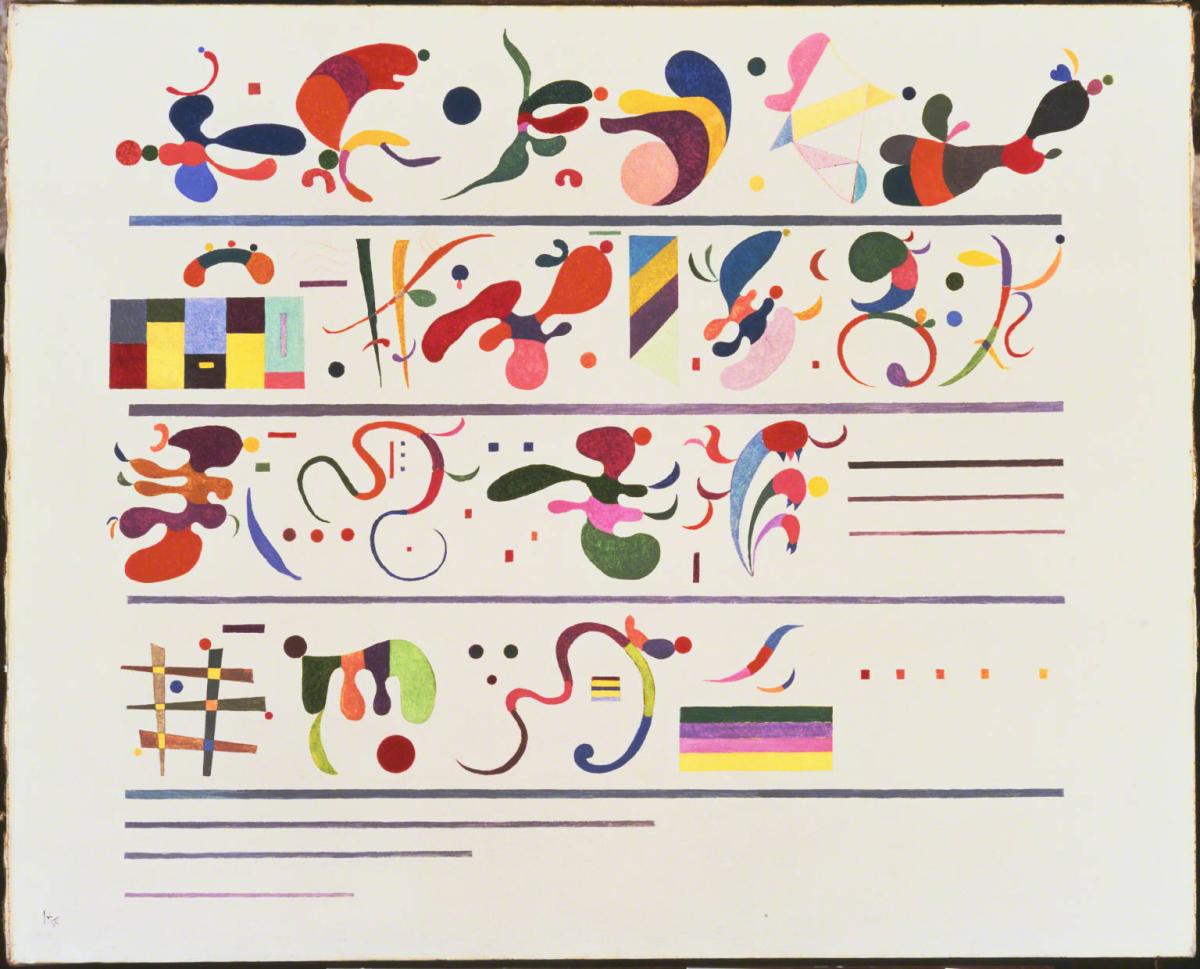Succession
Wassily Kandinsky ( 1935 )

Wassily Kandinsky’s thoughtful explorations and intellectual roots of art, and his search for abstract means to express them, revolutionized art in the early twentieth century. Writing in 1943, Marcel Duchamp saw Kandinsky’s late work as “a clear transfer of thought on canvas.” With this observation, he conveyed his understanding of Kandinsky’s reformulation of pictorial space into a pure white plane upon which hover signs and symbols. By contrast, Kandinsky’s friend Jean Arp saw in his late work an affirmation of life and of growth: “His work is aglow with spiritual reality… Things blossom, sparkle, ripple in his paintings and poems. They speak of old blood and young stones.”
Succession is an example of Kandinsky’s late burst of creative energy. At first glance, the painting recalls Kandinsky’s abiding interest in natural history and scientific drawings – embryos, amoebas, and invertebrates. However, closer inspection reveals fantasy creatures, shapes, and signs that dance along four horizontal fields reminiscent of musical notation.